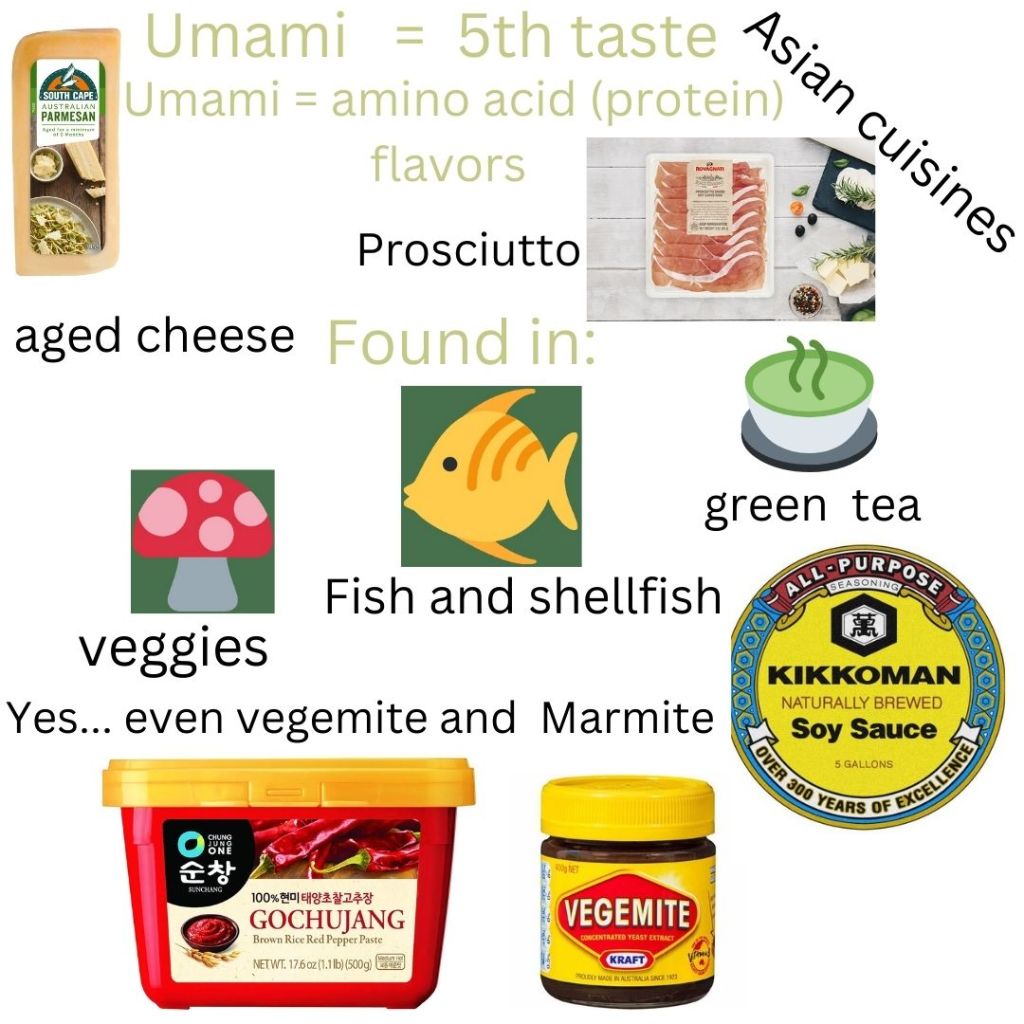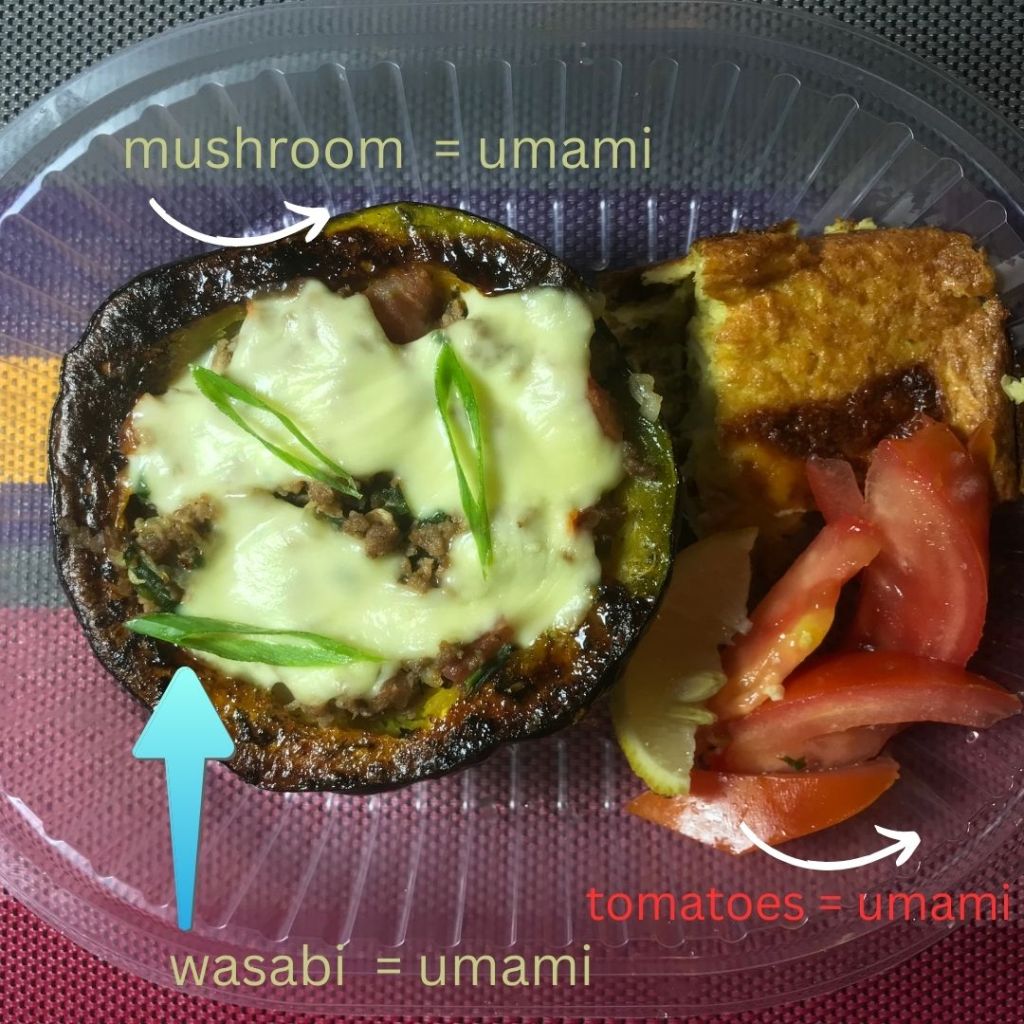
Image by dreamstime
Discovery of Umami and MSG
The use of Umami and MSG (Monosodium Glutamate) are closely related topics that have been discussed and researched extensively since the 1980. It was all started by Japanese chemist Kikunae Ikedas after he investigated the tastes of his wife’s rich kelp broth. Ever since, many discoveries such as receptor locations on the tongue have led to the understanding of this elusive flavor. When we eat, there are several factors that contribute to the flavor of food. One of these factors are the taste buds – small sensory organs on the tongue. The taste buds are composed of several taste cells that react to taste stimuli. They are situated on microvilli of taste buds in papillae. As you can see in the picture above, umami taste is located in the middle of the tongue.
Another new discovery is the glutumate taste receptor on the tongue. This glutumate receptor receives the specific glutamate taste substance. Each receptor has a task of binding to a peculiar taste substance, like in this case. In turn, these receptors transmit taste information through the nerve to the brain.
Difference between MSG and Umami
Not to be too technical here. Many people confuse umami and MSG, so, let’s first take a look at the difference. MSG was discovered by Japanese chemist Kikunae Ikedas in Japan when he isolated the flavor in his wife’s kelp soup. The main taste came from the amino acid in kelp. Chemist Kikunae managed to isolate the flavor compound in the lab which led to the discovery of MSG. Monosodium Glutamate is the compound found in foods such as vegetables, cured meats and aged cheeses. As the picture below shows, monosodium- salt – of glutamate – amino acid is the pure extraction that Kikunae isolated in kelp. Amino acids are building blocks of protein, and glutamate is one of them. It can be found in every living being on this planet. On the other hand, umami is the term given by chemist Kikunae to the isolated amino acid – glutamate or MSG. Umami is found in a variety of food products, including those listed in the picture below.

Created by Canva
Umami in food:

Created by Canva
Example of a dish with different umami flavors:

Created by Canva
MSG, umami and other amino acids
Amino acids are a key flavor contributor to umami, especially when comparing Western versus Eastern diet. The level of amino acids in each recipe can vary greatly. For example, miso soup contains a high level of glutamate while stocks, such as, minestrone soup has a lower level of glutamate. Each dish contains different levels of amino acids depending on the cooking time. Based on this, most Asian cuisine contains a higher level of umami. Moreover, there are a variety of amino acids in food. For example, fresh fish has no umami flavor but as the fish is dried over time, the umami flavor increases. This is due to an increase in a specific amino acid other than glutamate. Mushrooms, on the other hand, have a different type of amino acid that provide an umami flavor.
As you can see, umami can increase when certain factors such as cooking, drying, or adding certain compounds to the amino acids increase or decrease. For further reading, I would recommend: Umami: Unlocking the Secrets of the Fifth Taste by Ole Mouritsen and Klavs Styrbæk. The book extensively talks about the receptors involved on the tongue by glutamate and other amino acids that increase the umami taste that we all crave. Also, the book is easy to read and very informative.
MSG and safety
MSG is collection of naturally occurring compounds in food. It provides nutrition and helps us taste the food that contains the umami taste. The amino acids such as glutamate, which is found in most food items, gives us the ‘meaty’ or ‘savory’ taste. So, the next time you taste an ingredient think about what form the food is in. Was it dried, cooked, or is it raw?
References
- Umami: The Fifth Taste. International Glutamate Information Service (2023). Website: https://glutamate.org/basic/umami-fifth-taste/
- Ninomiya: Science of umami taste: adaptation to gastronomic culture. Flavour 2015 4:13. Website: https://flavourjournal.biomedcentral.com/articles/10.1186/2044-7248-4-13
- Science and health. Ajinomoto Co., Inc. (2019 – 2023). Website: https://www.ajinomoto.com/msg/what-is-msg-and-how-is-it-made
- Ikedas, Kikunae, Ph.D. (November 2002). New Seasonings. College of Science, Imperial University of Tokyo, Tokyo, Japan. Chem. Senses, 27 (9), pp.847 – 849. Website: https://academic.oup.com/chemse/article/27/9/847/305861?login=false
- Kurihara, Kenzo (2009). Glutamate: from discovery as a food flavor to role as a basic taste (umami). The American Journal of Clinical Nutrition, 90 (3), pp. 719-722. Website: https://www.sciencedirect.com/science/article/pii/S0002916523265326?via%3Dihub

Pingback: Food science topics – Alimentative
Pingback: Marmite | Living Well In The 21st Century